Every time I talked to my Singapore-based coworkers about places to visit during my time here, Cambodia came up again and again as a beloved destination. “Angkor is incredible,” they would gush, “you’ve never seen anything like it!” I flew into Siem Reap and spent a day visiting the Angkor Archaeologic Compound, which is only 3 1/2 miles away from Siem Reap.
The Angkor is one of the most important archaeological sites of Southeast Asia. Stretching nearly 160 square miles, the compound contains magnificent ruins of the capitals of the Khmer empire between the 9th and 15th centuries. The temples of Angkor are a source of inspiration and pride to the Khmer people as they struggle to rebuild their lives after years of terror under the Khmer Rouge (which I will share about in another post). There are over 1,000 temples in the Angkor area, ranging in scale from nondescript piles of brick rubble to Angkor Wat, the largest religious monument in the world. I can only see so many sites before temple fatigue sets in, so I selected these temples at my guide’s suggestion (in order of visit):
- Angkor Wat
- South Gate of Angkor Thom
- Bayon
- Baphuon
- Ta Nei
- Banteay Srei
- Ta Prohm
There are oodles of pictures of the temples below; but first, a few travel tips based on my personal experience:
- Hire a local guide to take you through the compound. Seriously, the area is so large that if you decided to see the temples by bicycle or on foot, you’d probably make it to 2 whole temples. Aside from he transportation itself, a local guide can tell you the history of each temple and point out unique things you may miss if you traveled solo. The added benefit is the guide can structure your visits to avoid crowds.
- Unless you like unnecessary torture, hire an air-conditioned car to take you around and not a tuk-tuk. A car may cost more (for example, $90 instead of $30), but Cambodia is hot and you’ll be so grateful that you can cool off inside the car between temple visits. (FYI: A tuk-tuk is essentially a carriage attached to a scooter. I promise to share pictures soon!)
- Go early. Get up for sunrise at Angkor Wat if you can, and pack your breakfast (hotels are very used to this request) instead of returning to your hotel for breakfast after sunrise. Aside from seeing the breathtakingly beautiful snrise, you can start exploring before the throngs of tourists with their cameras and tripods and the crippling Cambodian heat descends upon you.
- See the popular temples, but also see some more remote ones that are less crowded. After a few hours of wading through crowds, you’ll be really glad to have some peace and quiet.
- Don’t follow the circuit. There’s a great map of the Angkor compound with a big circuit and small circuit that people tend to follow. The circuits will take you to the sites that you want to see, but if you do them in the suggested order you’ll be joined by hoards of other people who will definitely ruin your pictures and make you feel extremely rushed.
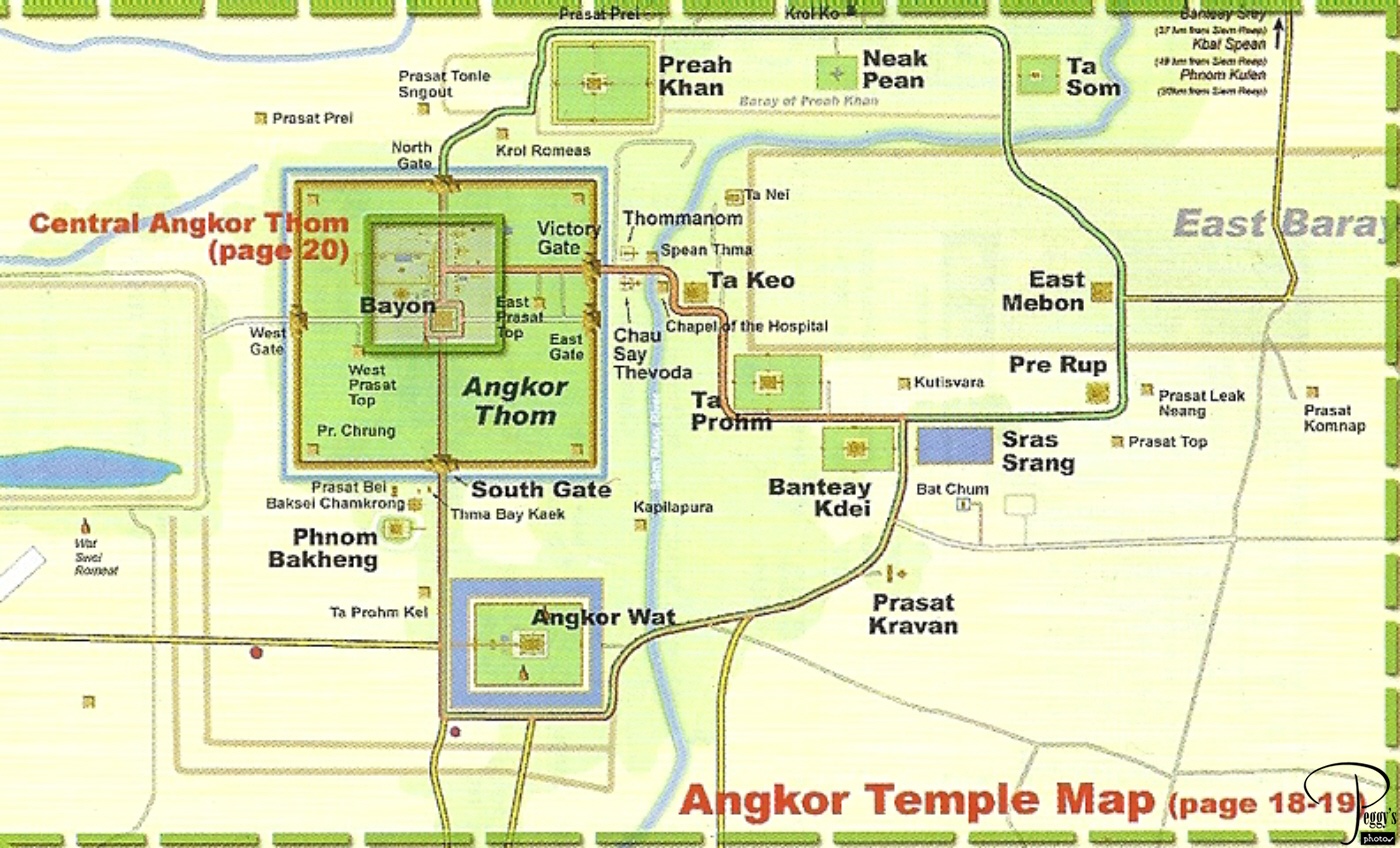
Angkor Wat
When I told my guide that I wanted to see Angkor Wat at sunrise, I didn’t I realized the effort that would entail. After departing from the hotel at the unholy hour of 4:45AM, the car drops us off at the outer gate of the temple and we begin to make our way towards the pond on the west side of the temple. My guide and I walked about 10 minutes through pitch blackness; him balancing my giant breakfast box in one hand and a flashlight in the other, me trying not to fall into the pond or break an ankle on the uneven walkway.
We finally arrive dry and unscathed. I fidget nervously with the settings on my camera as we await the sun, knowing that the window to catch the perfect sunrise was very short and I’d be so disappointed if I woke up at 4AM and had nothing to show for it! The gods smiled upon me that morning, and I was able to capture the most beautiful and colorful sunrise peeking out from behind the towers of Angkor Wat.
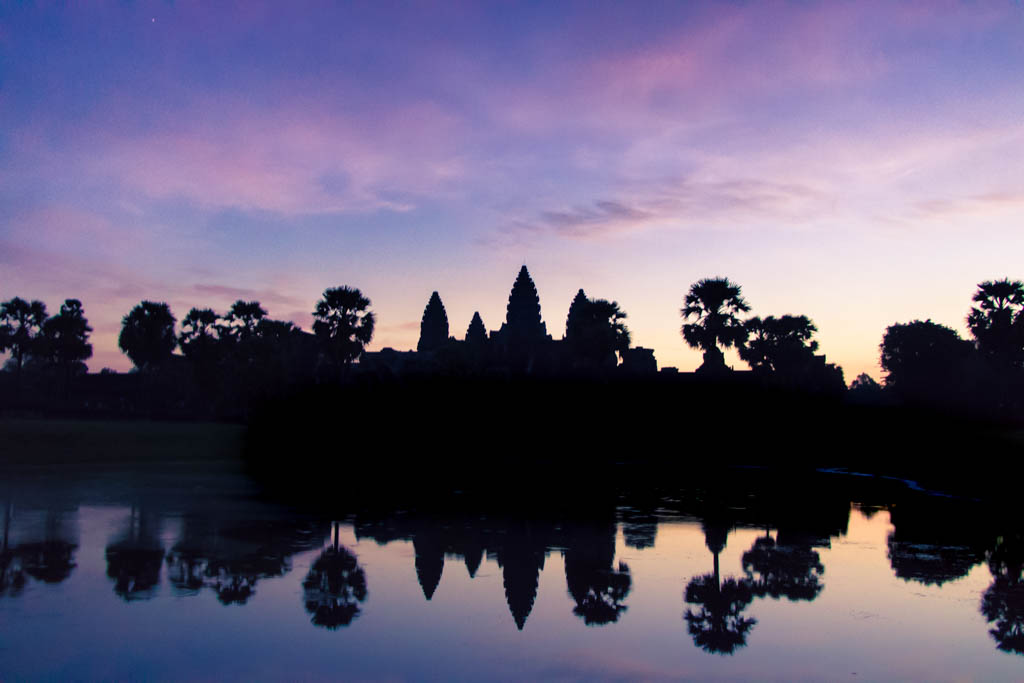
Built between roughly 1113 and 1150, Angkor Wat is one of the largest religious monuments ever constructed. In the picture below, you can see its 213-foot-tall central tower surrounded by four (okay, 3 in this picture, one is behind that tree) smaller towers.
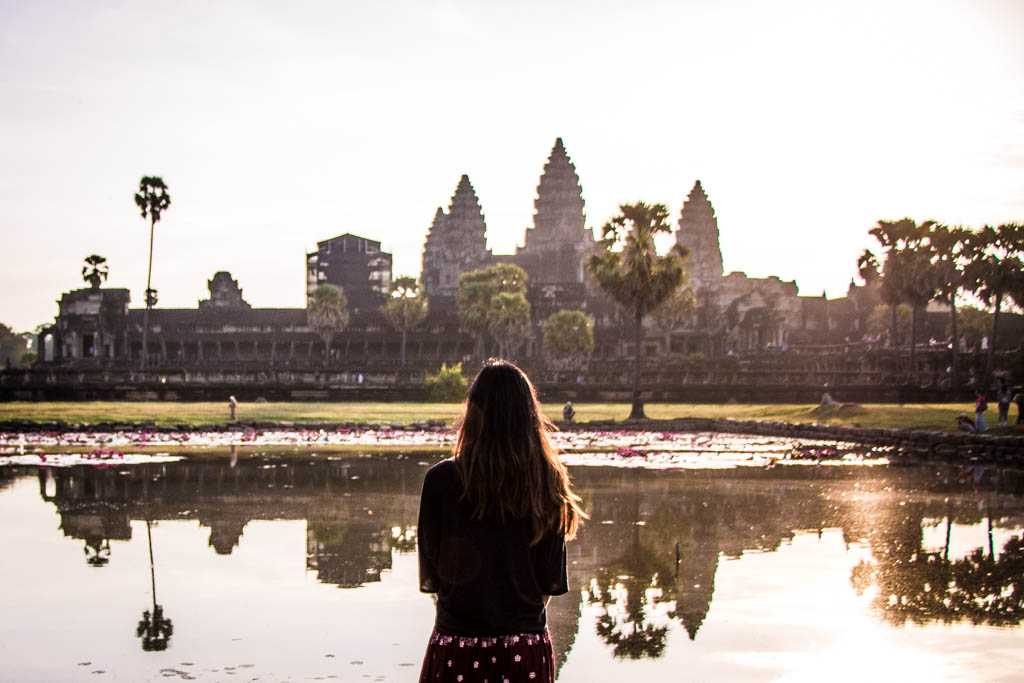
Its name means “temple city”. The temple itself is surrounded by a series of enclosure walls and a moat, meant to symbolize the mythic Mt. Meru.
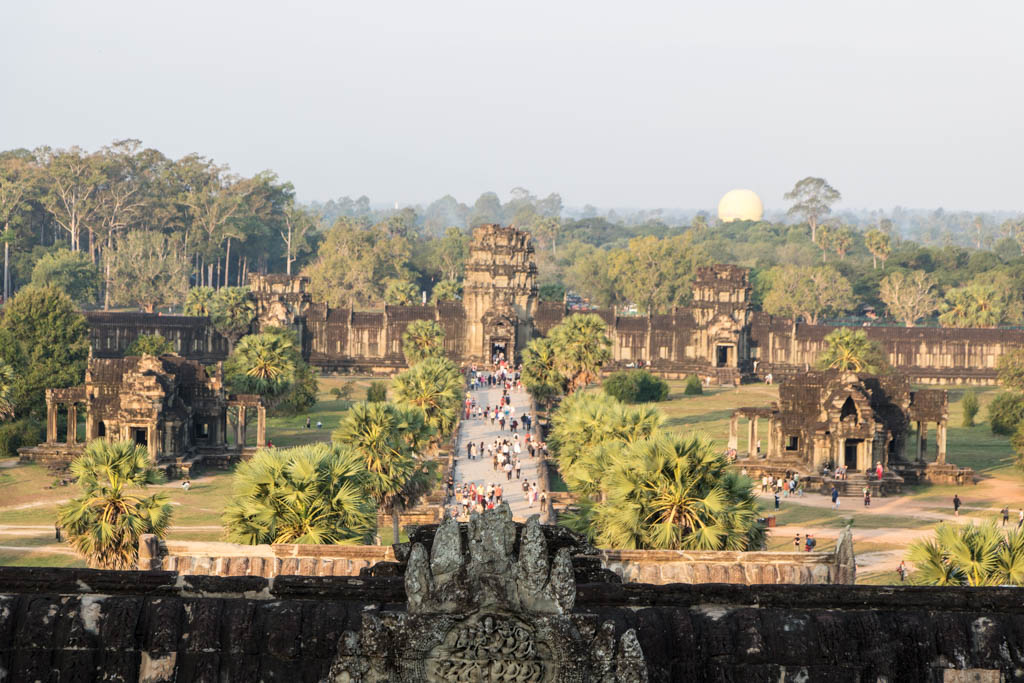
Given its size and stature, it’s no surprise that constructing Angkor Wat was a huge undertaking. Archaeologists estimate that the moat required 53 million cubic feet of sand and silt to be moved, a task that would have required thousands of people working at one time.
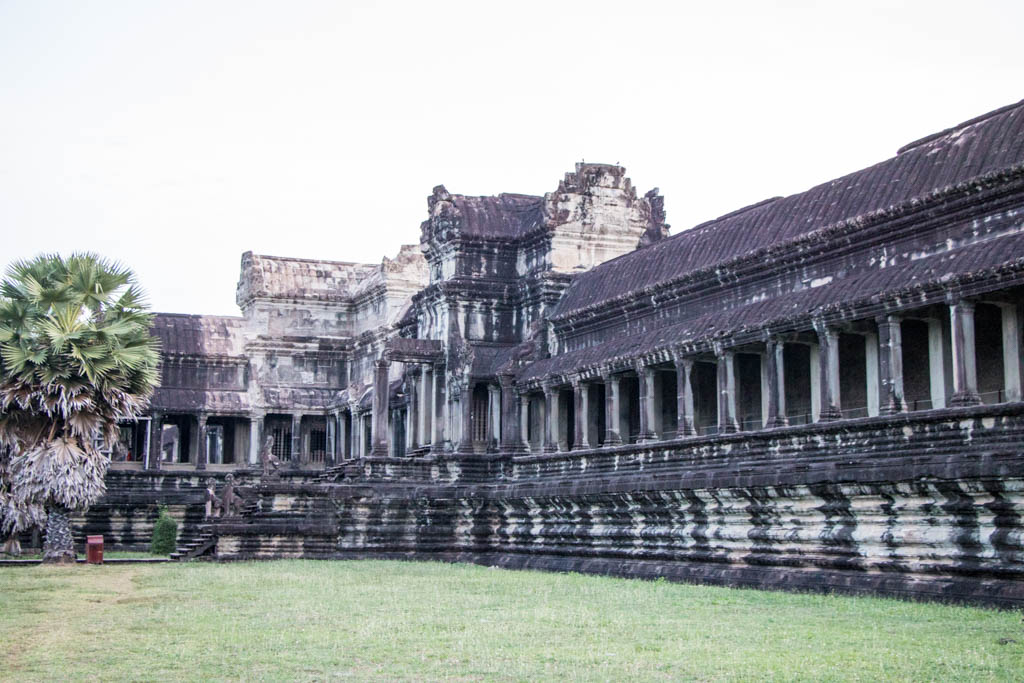
The building itself is made of sandstone blocks quarried from the Kulen Hills 18 miles to the north. Recent research indicates that they were transported to the site by a series of canals.
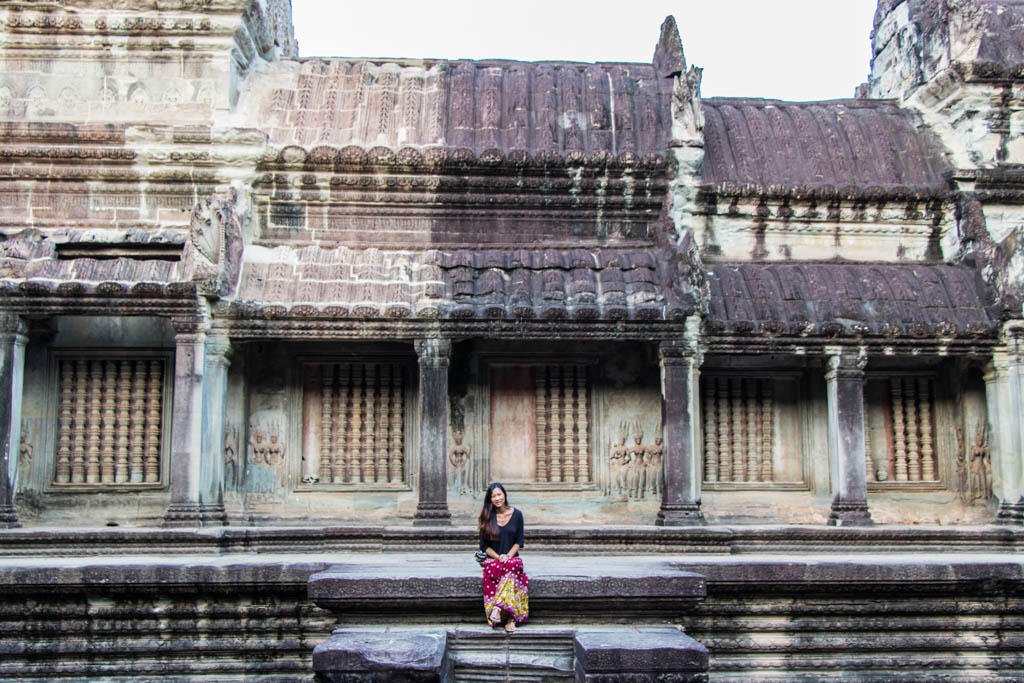
I’m glad I was able to capture the picture below with a few people in it to show just how massive Angkor Wat truly is.

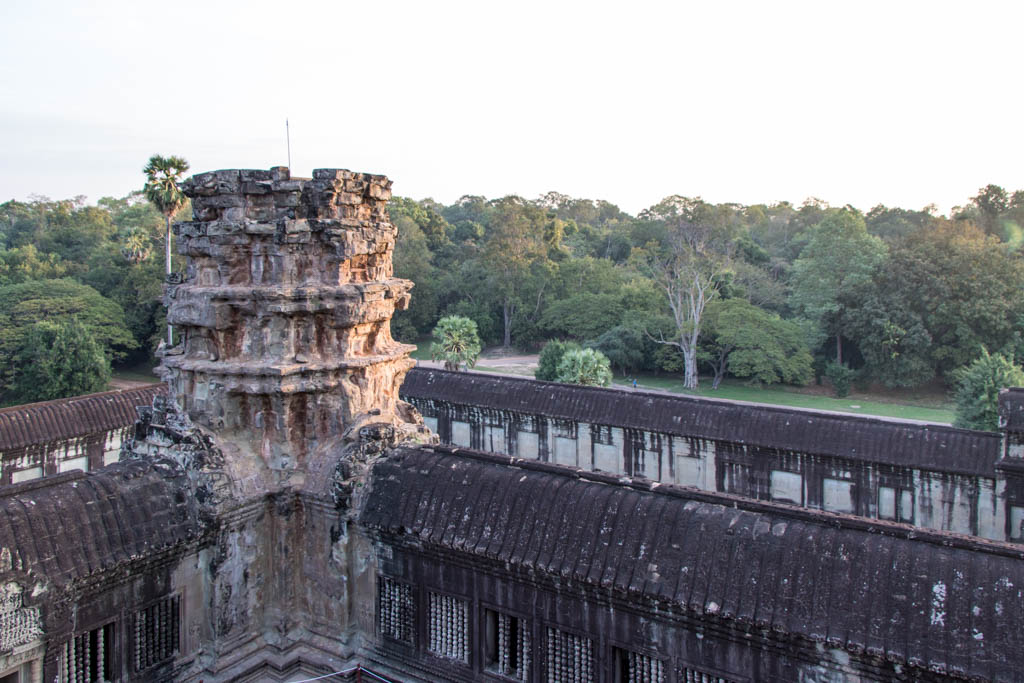
Angkor Thom and Bayon
Next, we passed through the gates of Angkor Thom. Angkor Thom was the last capital of the Khmer Empire and was a city enclosing residences of palace and military officials as well as the kingdom’s administrative buildings.
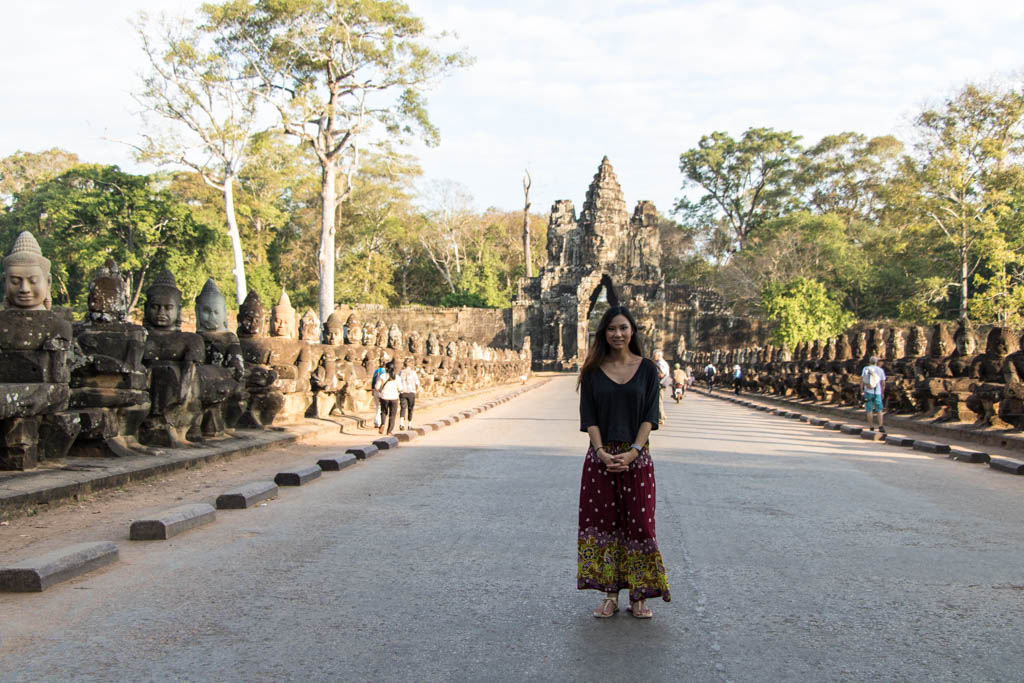
Located at the center of Angkor Thom is the Bayon temple, which is known for the large faces carved into the stone throughout the temple.

The temples 54 towers are decorated with a total 216 giant smiling faces.

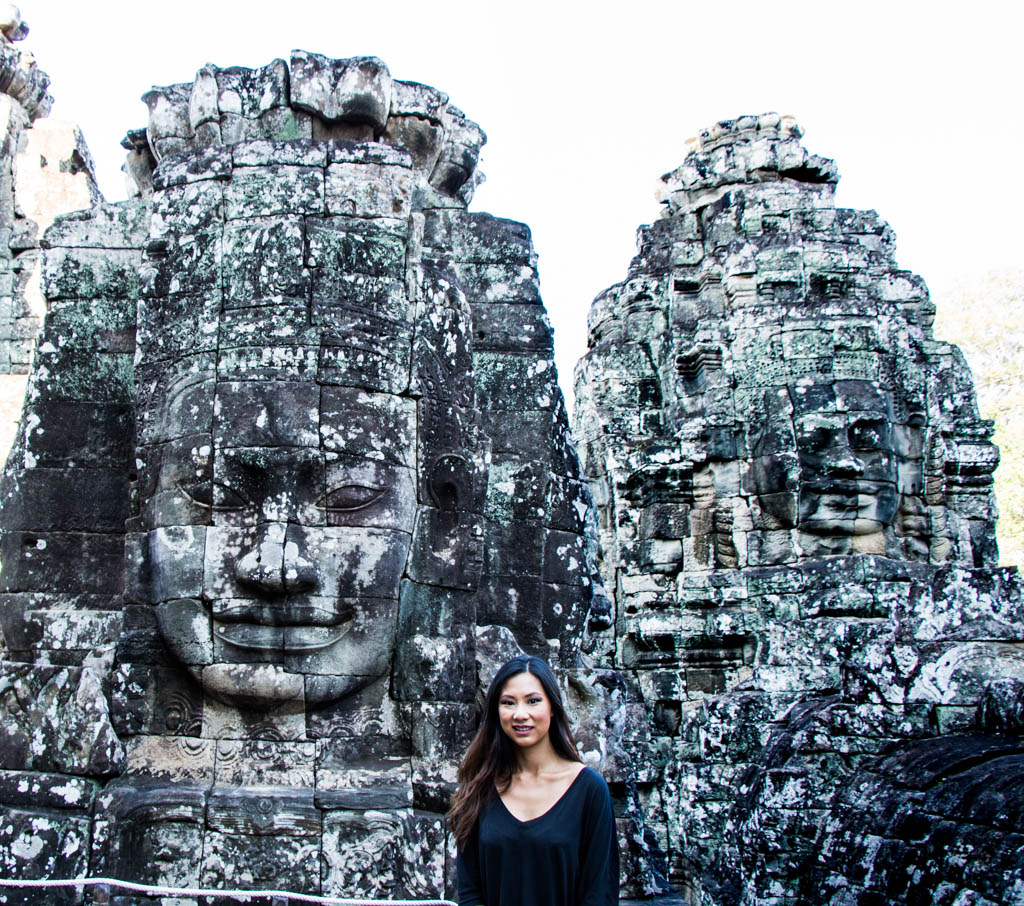
Baphuon
We also made our way to Baphuon, a three-story mountain of a temple also located inside the city of Angkor Thom.

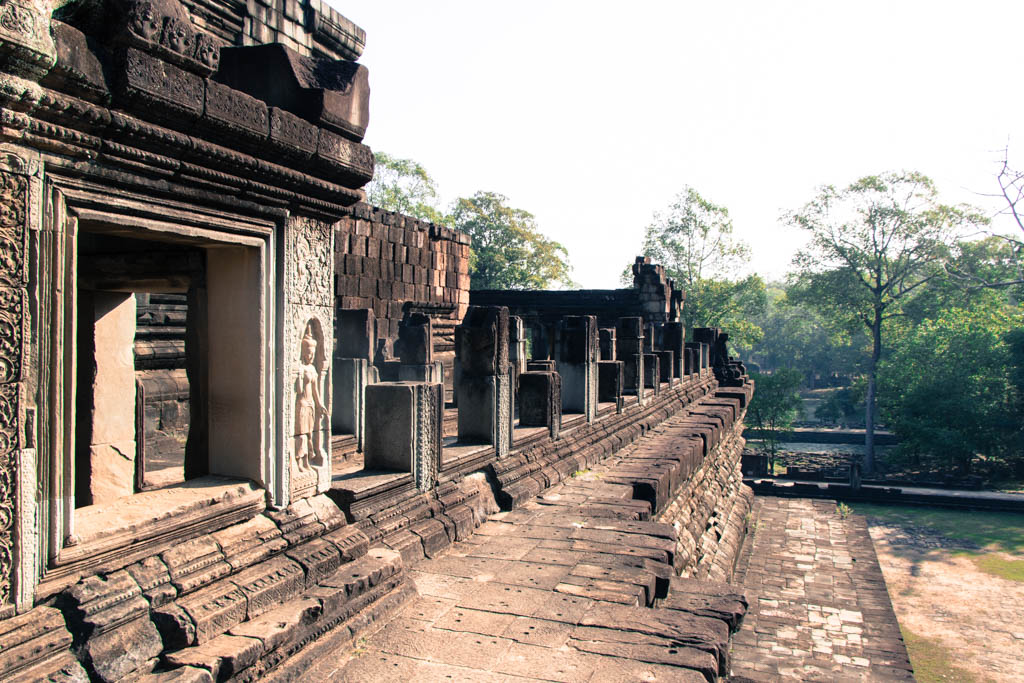
The stairs leading to the top of the temple are so narrow and steep that I literally had to walk sideways to get up them.
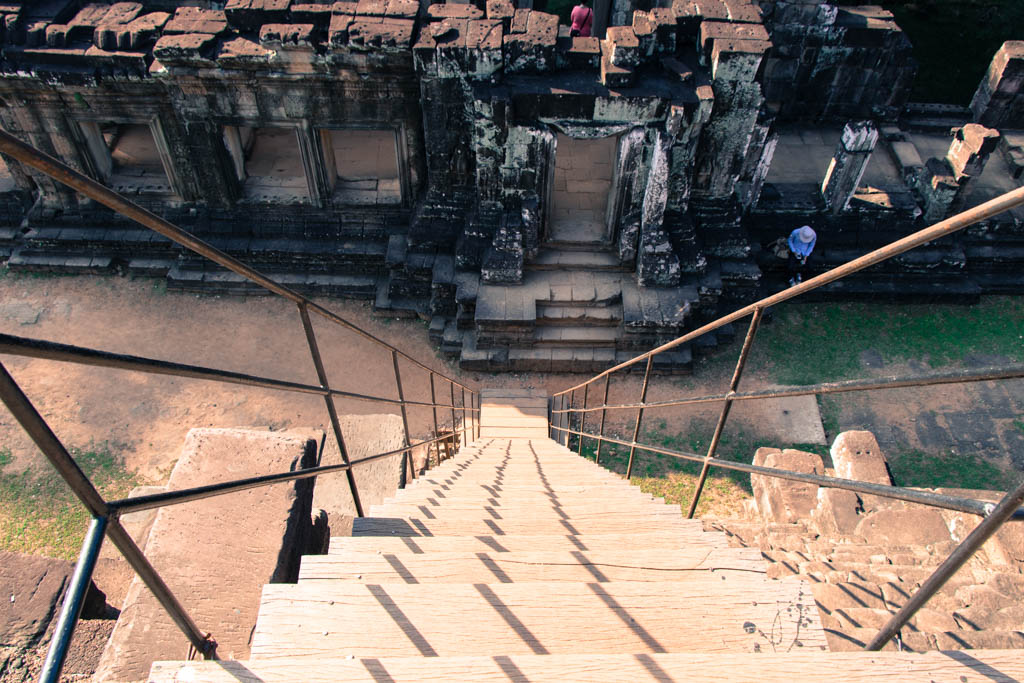
After braving two harrowing flights of stairs, I was rewarded with a panoramic view of the lush jungle surrounding the temple.

Ta Nei
I wanted to make sure that I saw some less popular temples that were a little further away from the main areas. Ta Nei is tucked deep into the jungle and is not a popular destination for tourists. As a result, I had the temple to myself and was free to explore and take pictures without anyone else around.
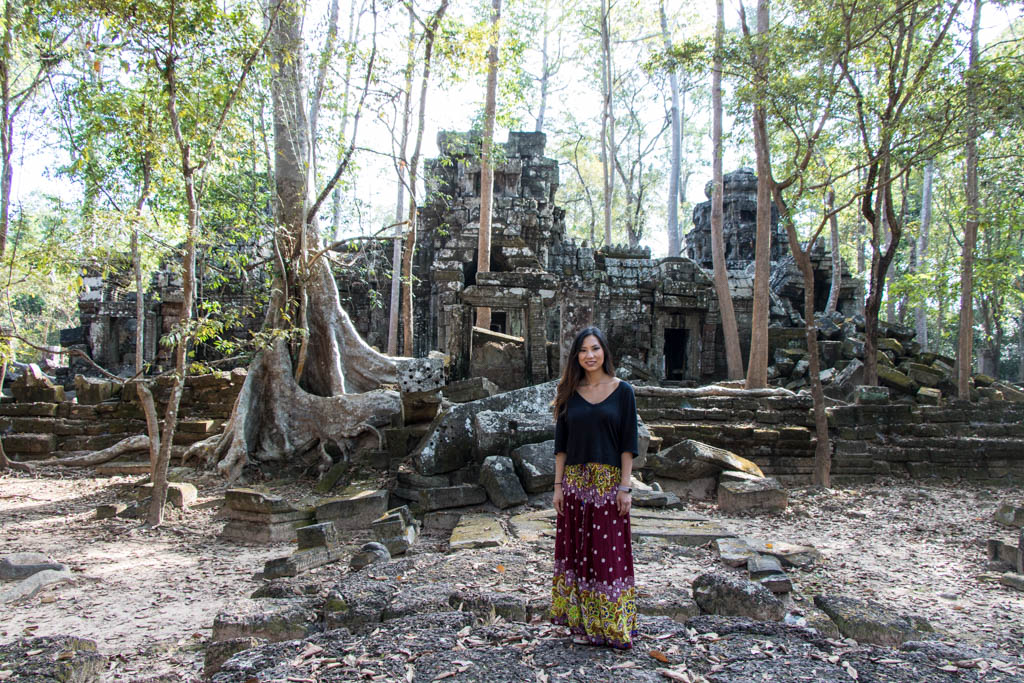
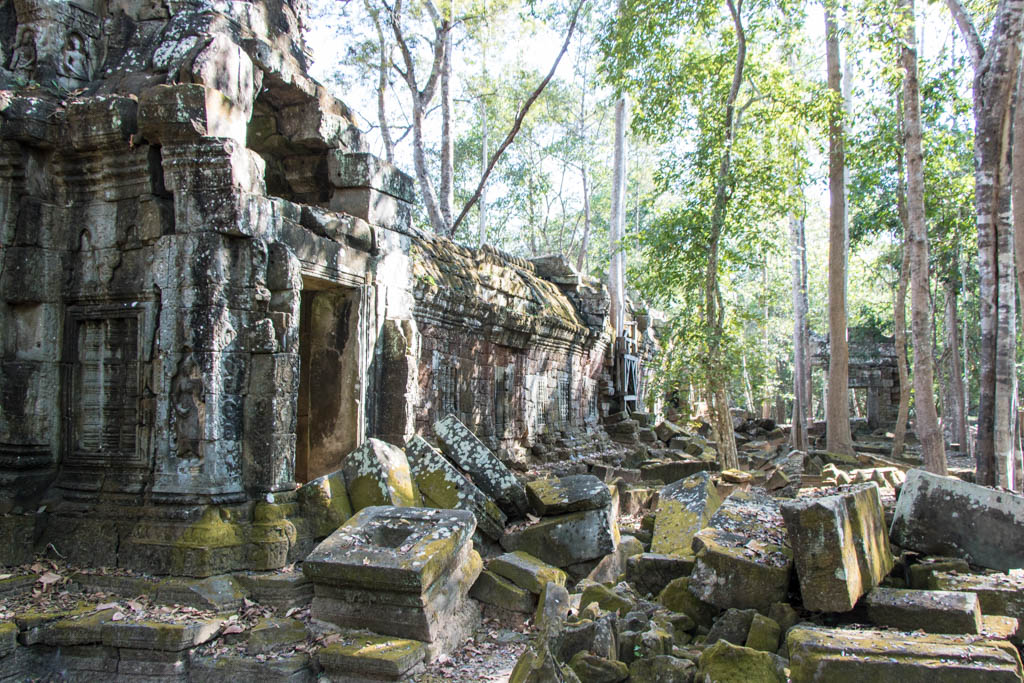
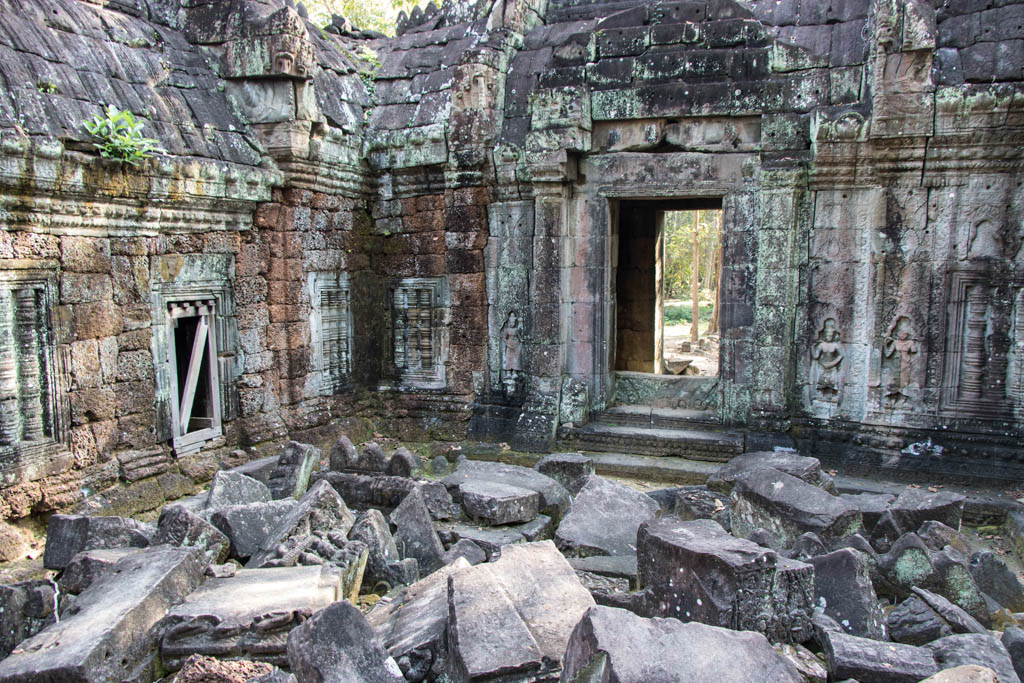

Banteay Srei
After my peaceful visit to Ta Nei, we made the 30-minute trek to Banteay Srei, which means “citadel of women”. Often called the Lady Temple, it is well-known for its pink stone and intricate carvings.

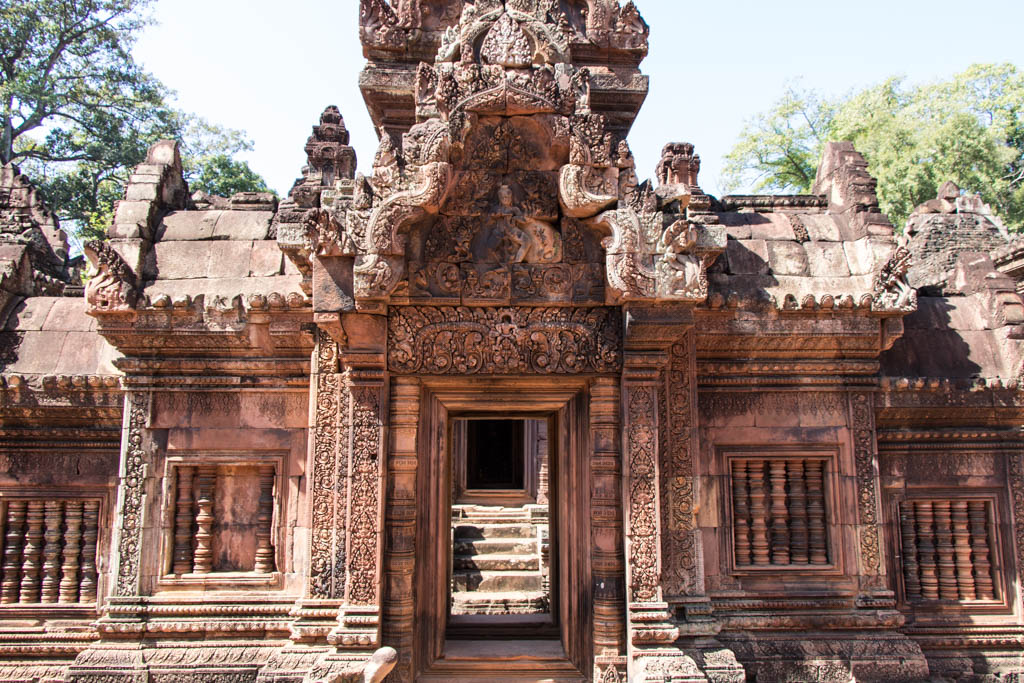
Even though it’s one of the smaller sites at Angkor, it’s worth a visit to see the wonderfully well-preserved carvings, which are the most intricate in all of Angkor.
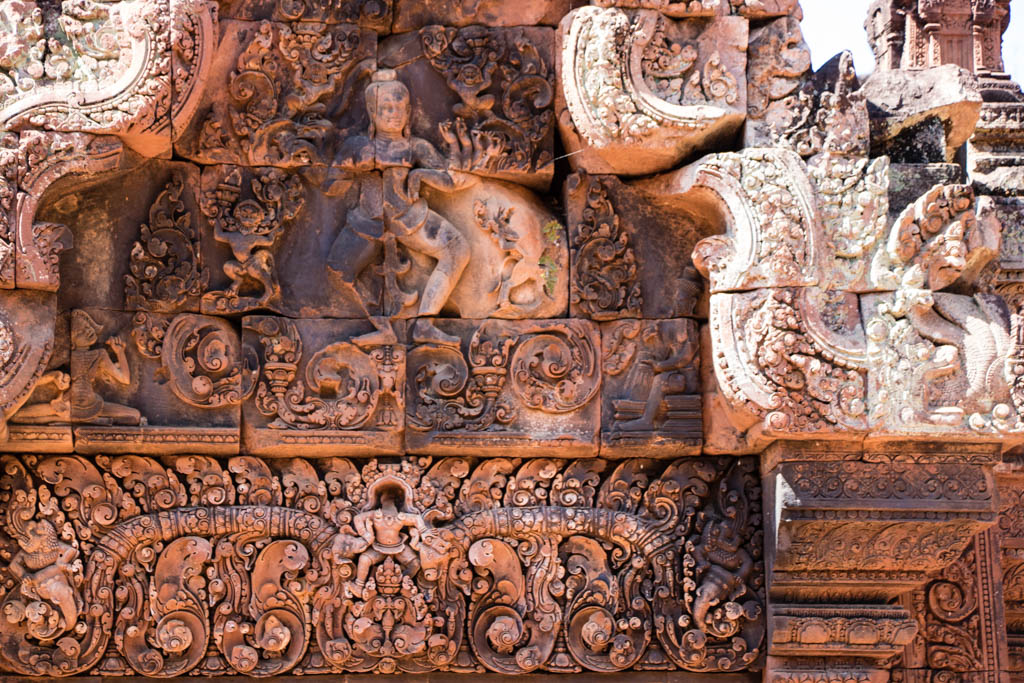
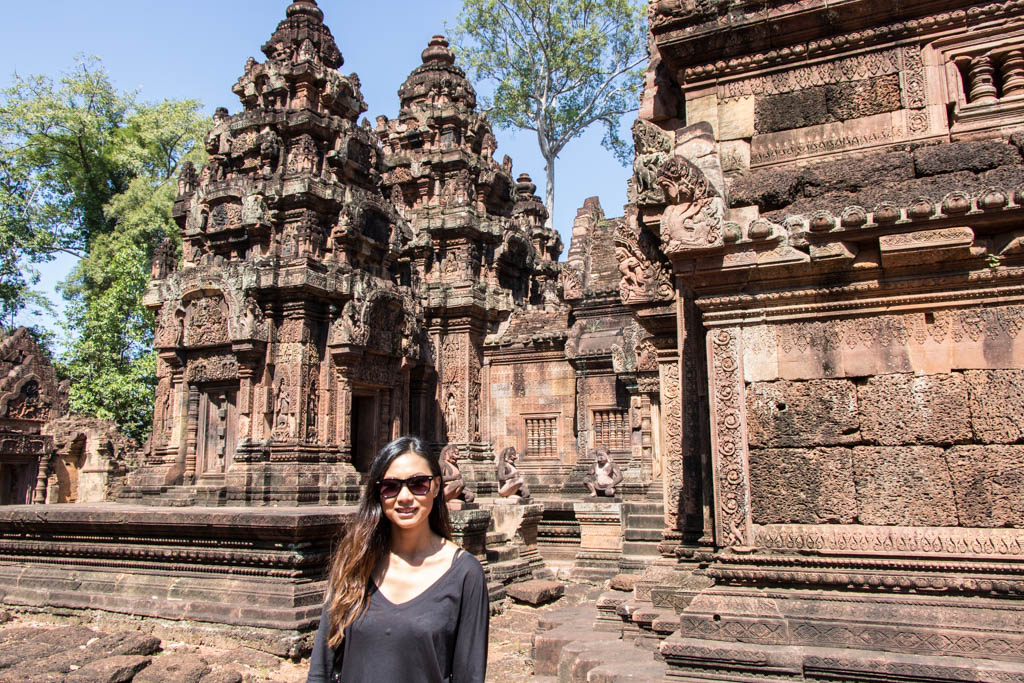
Ta Prohm
Finally, our last stop of the day was Ta Prhom, the temple made famous by Angelina Jolie’s Tomb Raider movie. I’m so glad we saved this for last because it was my favorite of all the temples!

Unlike the other Angkor temples, Ta Prohm has been largely left to the clutches of the surrounding jungle. Vast root systems snake and crawl through the temple’s crumbling towers and walls.
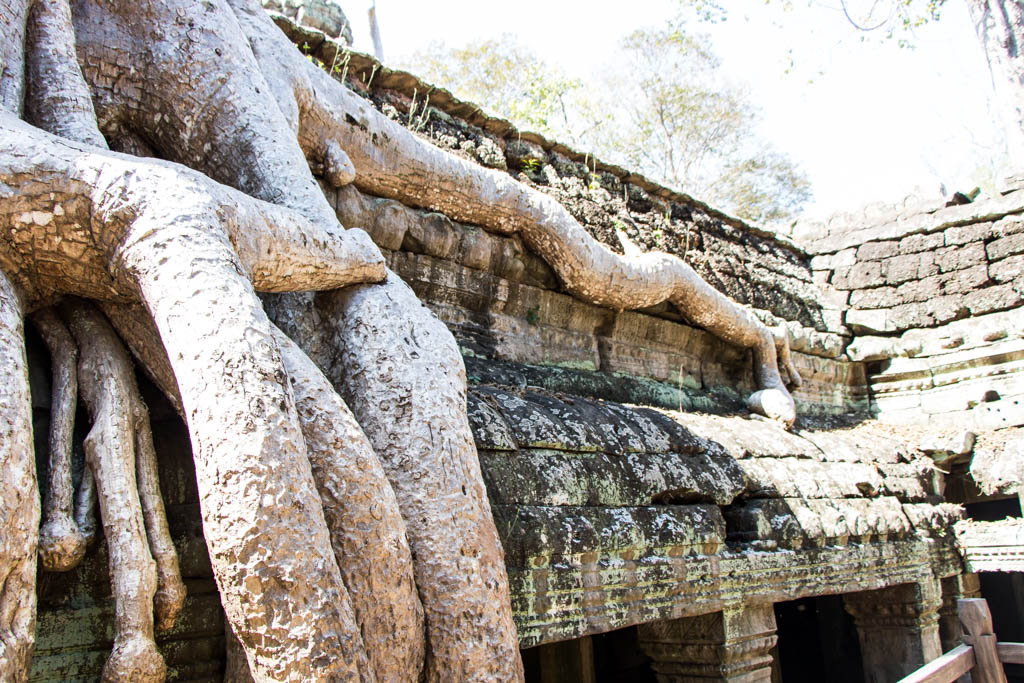
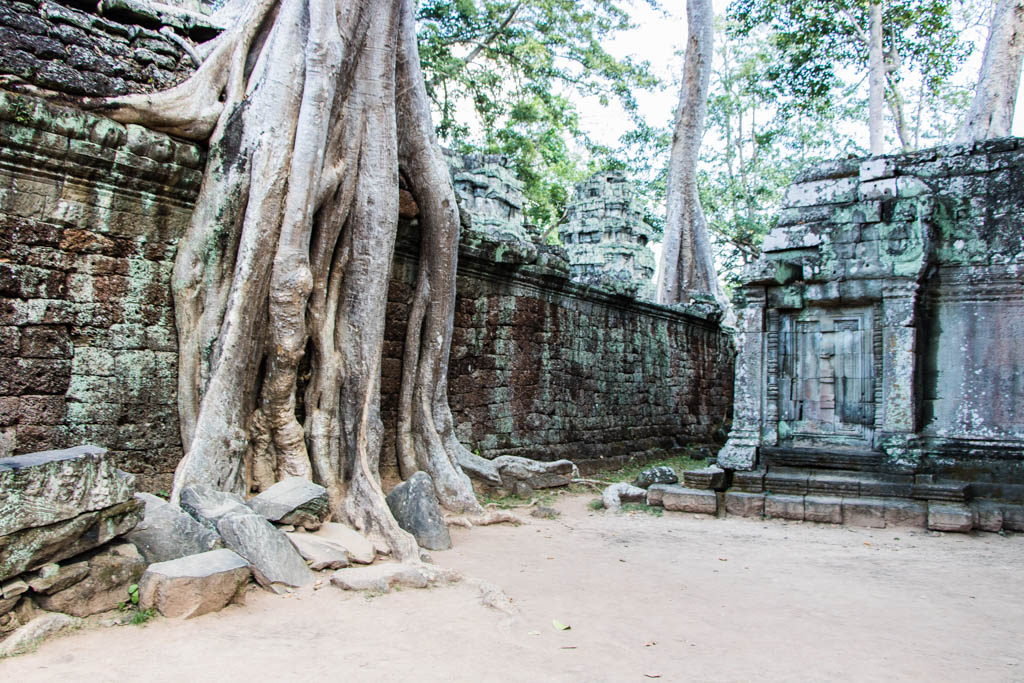
Below you can see the iconic “Crocodile Tree”, which swallows the temple’s wall.


Another famous spot in Ta Prohm is the so-called “Tomb Raider tree”, where Lara Croft picked a jasmine flower before falling through the earth.
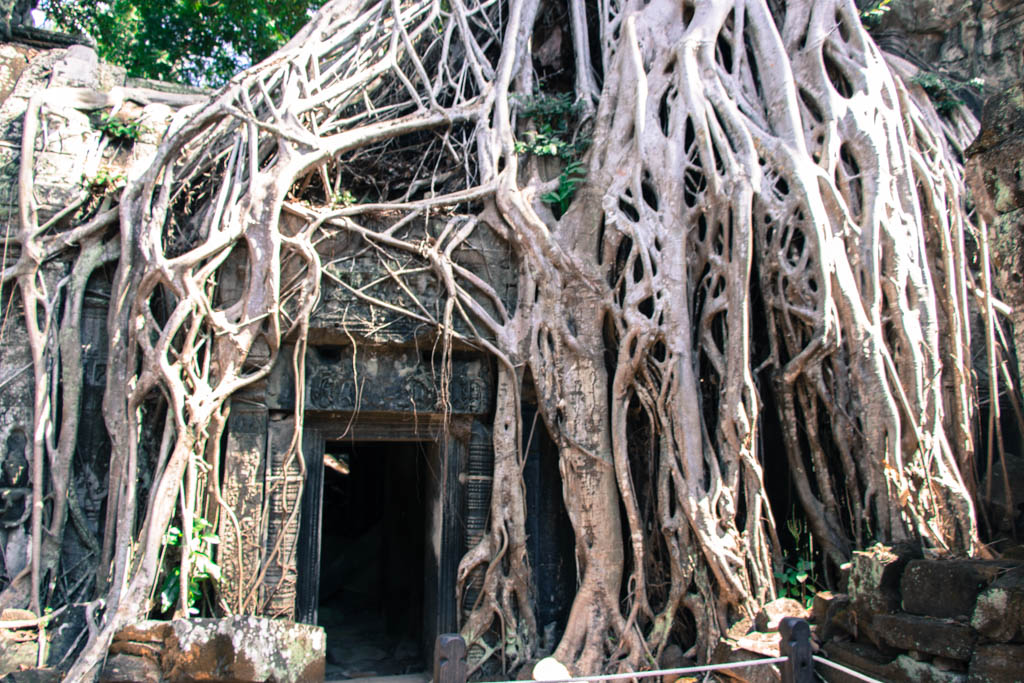
I wish I could have captured more of the area around the tree, but (not surprisingly) this area was insanely busy and I was fortunate to even get a tiny sliver of the tree without a bunch of people in front of it.
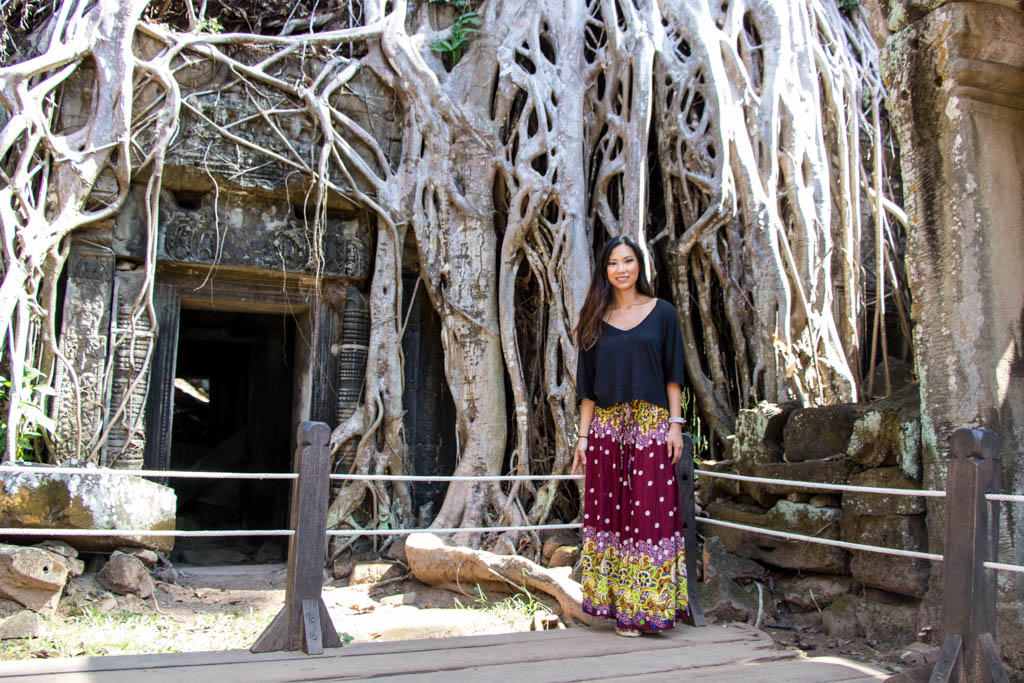
I was completely in love with Ta Prohm and made Sophal take way too many pictures of me. Eventually I felt like just standing there for pictures was lame and came up with the terrible idea of “posing” for pictures as if I was frolicking through the tree roots. In addition to being hilariously disrespectful to this religious site, I ended up with a series of pictures that look like really awkward senior photos.
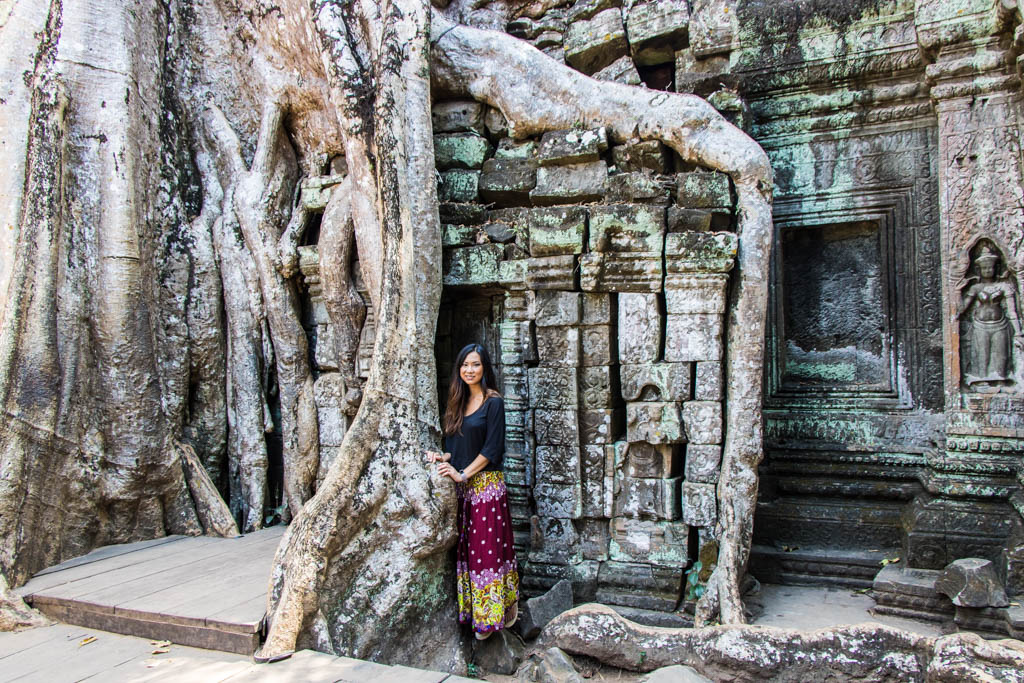

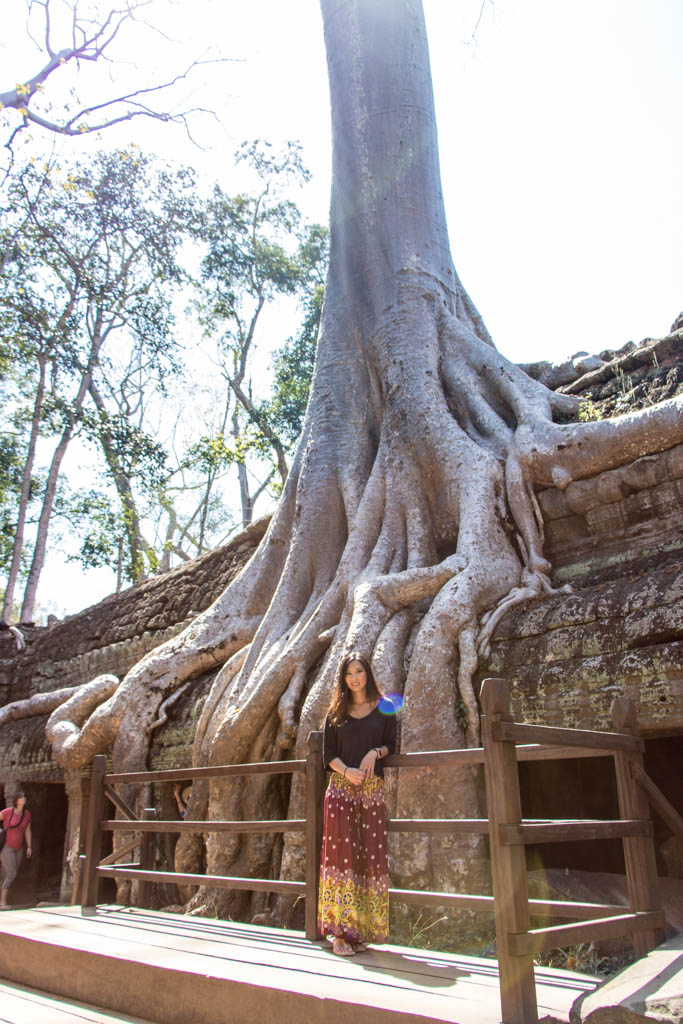
You’re probably wondering, “Ashley, what’s with the outfit? Aren’t you hot under all that clothing?” Even though the Angkor compound no longer serves as a place of worship for the Khmer people, it is still considered a religious site. Like most religious sites in Asia, you have to cover your shoulders and knees in order to enter as a sign of respect. And yes, it was very hot.